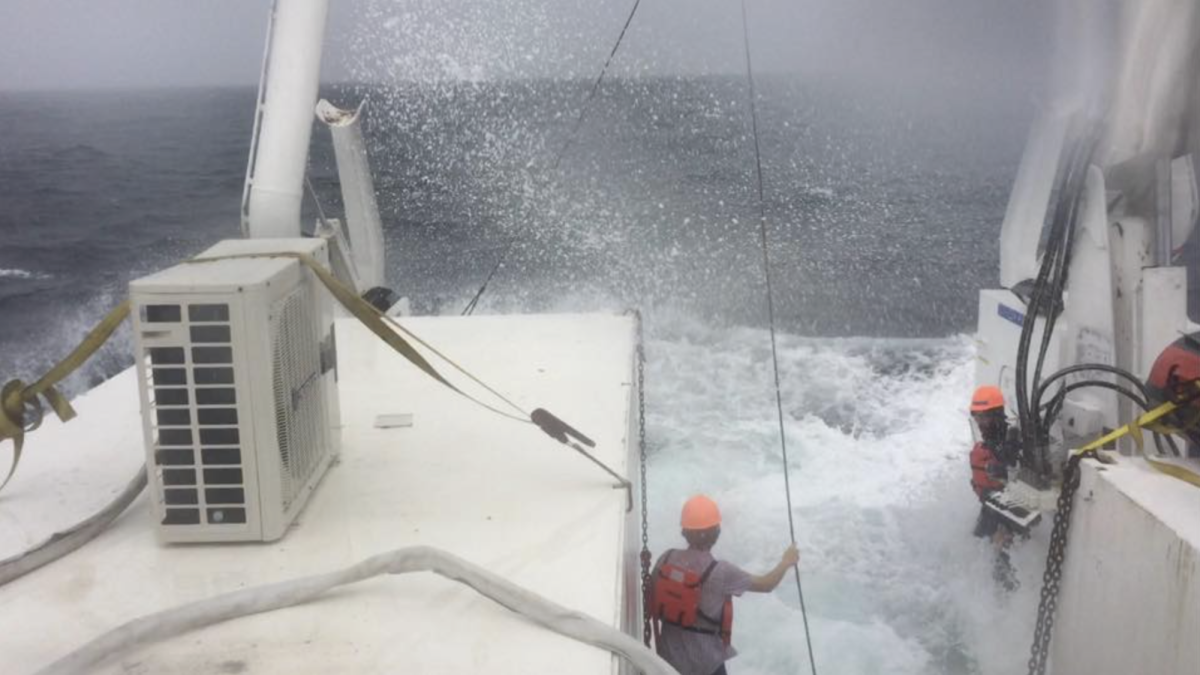Chandra Theegala finished grading his students’ final exams for the spring semester on a Sunday afternoon. But instead of kicking back to enjoy the start of summer break, Theegala went to The Home Depot with $120 and a plan to help save the Gulf of Mexico.Theegala, an associate professor in the Department of Biological and Agricultural Engineering, spent the next several hours attaching tubes and pipes to pumps and barrels. When Theegala finished the prototype, he immediately called AgCenter officials to “let them know it worked.”Theegala’s project, a cost- and energy-efficient oil skimmer, first worked at an intake rate of 1 gallon per minute of oil-water mixture. The skimmer uses a special pump, density differences and the moving water’s velocity to pull oil from the intake into a separate container before discharging water from where it came. Now, using AgCenter funding, Theegala has scaled the prototype to intake 70 gallons per minute and is awaiting approval from both BP and the U.S. Coast Guard to test the skimmer in the Gulf of Mexico. He built the larger version with the help of students in only eight days.”If someone sees this for two minutes, that’s all I need,” Theegala said. “It’s just hard to get the right people at the right time.”Next, Theegala hopes the skimmer will pass appropriate tests, allowing it to be used in either the current or future oil spill cleanup efforts. The prototype, he said, can be scaled to any size — one buyer has already expressed interest in a skimmer that takes in 1,300 gallons per minute, which Theegala said is possible and would “cost less than $100,000 to make.””This works. We need to get this design out in the Gulf,” said John Brown, a mechanical engineering junior who helped Theegala build the larger prototype. “Instead of using dispersants, which is just like sweeping the problem under the rug, we should be out there picking all of [the oil] up.”The current prototype, which cost about $7,000 to build, fits on a pontoon boat, but larger versions could be fitted on shrimping boats or even barges. The skimmer has no limitations on how much is can possess, meaning scaled models could handle anywhere from 60,000 to 600,000 barrels per day.Theegala said, however, bigger isn’t always better — as an example, he said having one large bee collect pollen from flowers wouldn’t be as efficient as a swarm of smaller bees harvesting from flowers across a larger area. Like the flowers spread across a field, the oil is spread across the Gulf and requires “a fleet of these skimmers” for effective cleanup.Theegala said he first tested the prototype in one of the LSU Lakes before testing the current one June 9 in the Gulf to see how it would fare in open waters. “It rode like a champ,” he said. “The only problem is we didn’t see any mats of oil, and obviously we couldn’t pour oil into the [LSU] Lake or Gulf to see how it would work.”After waiting nearly 40 days for the necessary approval to test the prototype in oil-stained waters, Theegala moved the skimmer to the E. B. Doran Agricultural Engineering Building near Patrick F. Taylor Hall on campus to conduct his own test. The wait has been frustrating, but he said he expects to hear back from the U.S. Coast Guard and BP within the next week. Theegala said while “there is no 100-percent guarantee,” he is “99 percent sure it will work” properly when tested. Part of this certainty, he said, is because the skimmer “has no moving parts” except the pump, decreasing the chances of mechanical failure. These skimmers are 50 to 100 times less expensive than those currently being used in the Gulf, and Theegala said if shops were to start producing his design, they could “make hundreds in a week.”While this version of the skimmer is best suited for deep sea cleanup, Theegala said he also developed a smaller, more portable version that’s ideal for shallow marsh waters. This version, Theegala said, stands upright on small fishing boats, and workers use a vacuum-like tube to suck oiled water into the machine to be filtered. Theegala said AgCenter officials will ultimately decide what to do with his design because the University has rights to the intellectual property he developed, but it could be sold to a private company for manufacturing should it gain appropriate approval for use in the Gulf. “If we can make hundreds of these, we could collect 90-plus percent of the oil,” Theegala said.
—-Contact Nicholas Persac at [email protected]
University professor develops new oil skimmer
July 13, 2010






